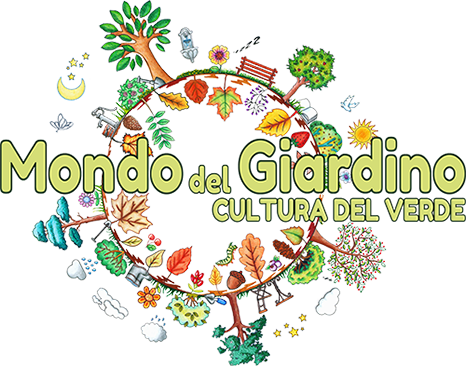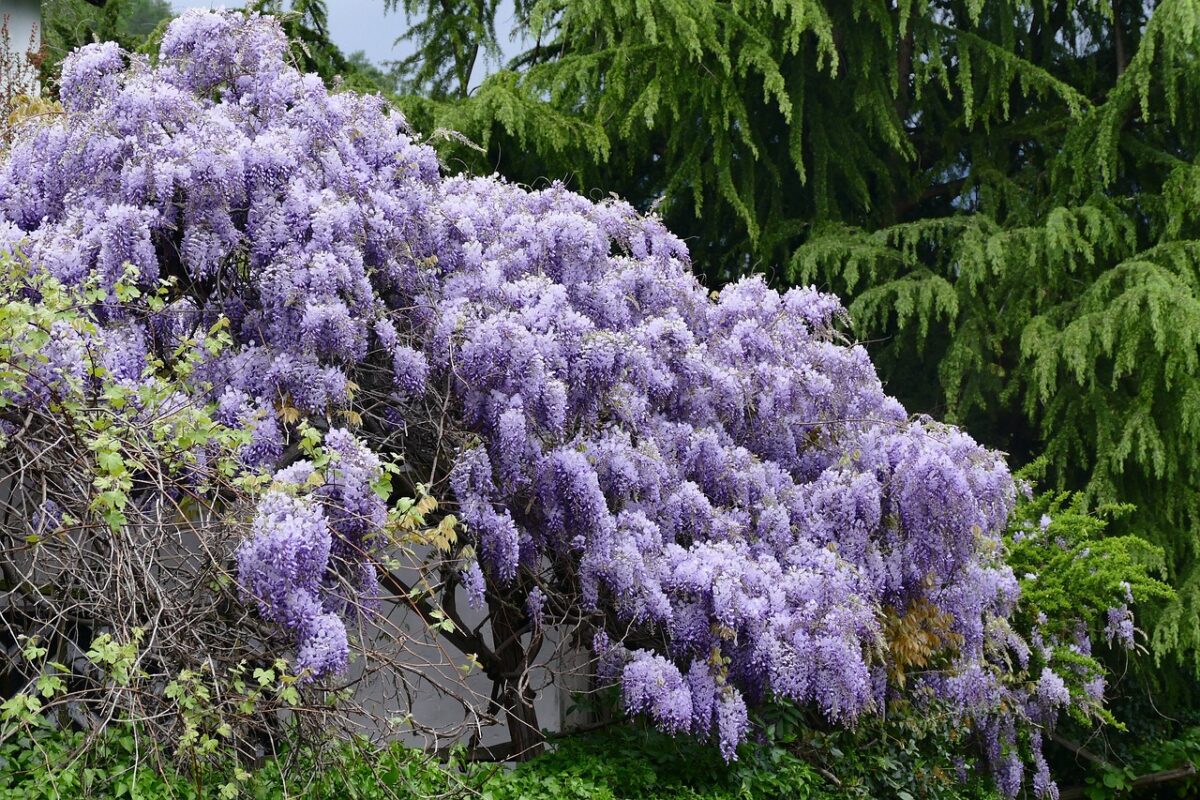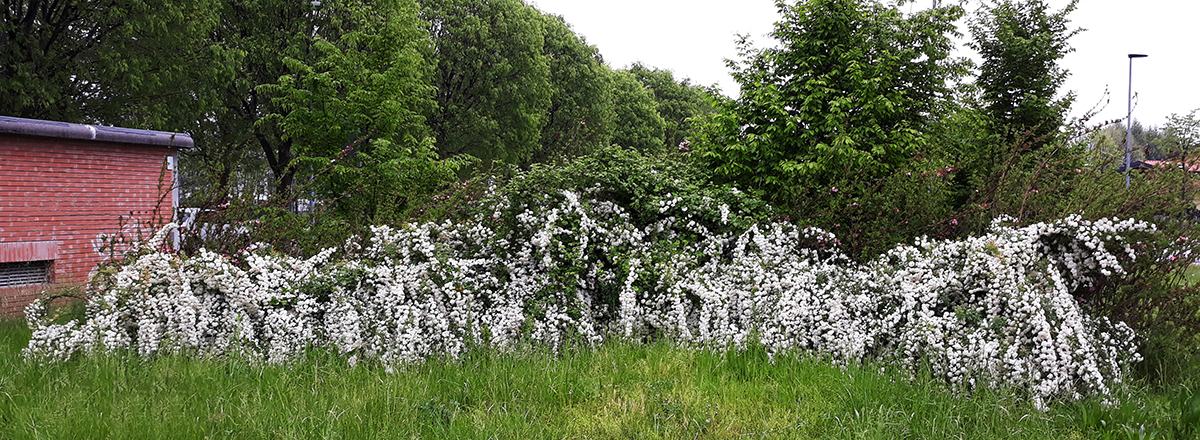IDENTIFICATION of Wisteria sinensis
Scientific name:
Wisteria sinensis

Italian common name:
Glicine
Family:
Fabacee
Origin:
is a species native to the provinces of Guangxi, Guizhou, Hebei, Henan, Hubei, Shaanxi and Yunnan, in China
Enviorment:
Mild weather. In hot climates it can live, but there is a risk that it will be sick in summer due to high temperatures and dry wind. It tolerates both summer heat and winter frost down to -15°
Evergreen or deciduous:
deciduous
Toxicity:
The fruits are legumes and contain poisonous seeds.
PLANT RECOGNITION of Wisteria sinensis
Height:
They can grow up to 20 m in height
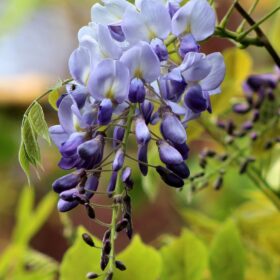
Width (extension):
10m horizontally
Habit:
climber ground cover shrubby plant (it does not cling to the supports but runs along them tending to get up): its branches naturally rotate counterclockwise around the supports.
Leaf:
light green, yellow in autumn, oval, lanceolate with sharp apex, 7 to 13 cm long, imparipinnate, with 9 to 19 leaflets.
Flower:
The hermaphroditic flowers with papilionaceous corolla of blue-lilac or mauve color are gathered in pendulous racemes from 20 to 30 cm long, purple, pink or white (depending on the acidity of the soil). It can take several years for the first flowering if you planted it from seed.
Flowering:
Flowering precedes leafing and occurs at the end of winter for a couple of weeks
Fruit:
pod-like fruits, green and velvety. the seed is a legume 8–15 cm long
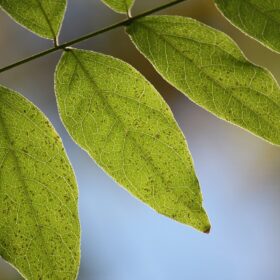
Perfume:
yes unmistakable
NEED
Maintenance:
low except for pruning.
Fertilization:
fertilize for the first 2-3 years after planting
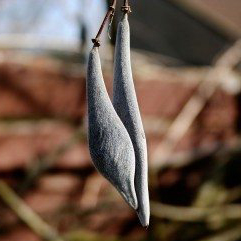
Light Exposure:
full sun, but it bears also a bright semi-shade
Soil type:
deep and fresh, clayey and rich in nutrients. No to calcareous soils
Soil acidity:
it prefers acidic soils, with a pH between 4 and 6. Ferric chlorosis is common in calcareous soils, which can be corrected by adding iron sulphate to the soil, irrigating with acidic water and fertilizing with specific fertilizer for acidic plants.
Italian climatic area:
widespread and cultivated plant in the gardens of all temperate regions.
Need for water:
moderate. Water the young plants in case of prolonged drought.
Diseases:
aphids and mites, chlorosis.
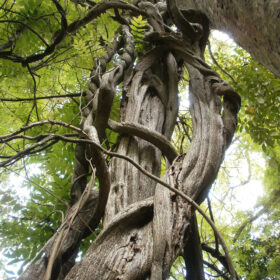
Pruning:
every year after flowering it prunes itself. In August we choose the branches that we want to grow and lengthen the plant and we eliminate the rest with the “spur” technique, i.e. cutting the 1-year shoots, leaving only 3 buds that will give flowers the following year
Propagation:
the seeds of the sinensis germinate easily. The seeds of hybrids, on the other hand, are not always. It also propagates by layering or by detachment of a sucker.
PARTICULARITY
The term Wisteria of the genus was dedicated to Dr. Caspar Wistar, a friend of the author of the genus Thomas Nuttel. The sinensis species refers to Chinese origin.
In the language of flowers it indicates friendship and can live 100 years.
The plant is very vigorous and for this reason it tends to incorporate the structures on which it is made to climb. The support structure must therefore be resistant or the plant must be kept under control. An alternative method is to have it climb a dead plant that will support it until the wisteria can support itself.
Good plant for bonsai but with a very difficult level of development.
Annotations
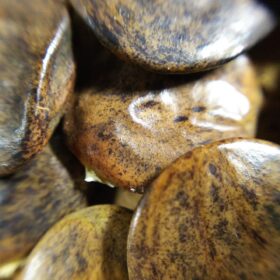
Wisteria grow by wrapping around any support either clockwise (like W. floribunda) or counterclockwise (W. sinensis)
As an ornamental plant for covering walls, pergolas, fences or climbing trees, in gardens and on terraces thanks to its rapid development and exuberant flowering. The young plants, suitably pruned, form small trees suitable for cultivation in pots.
Therapeutic use: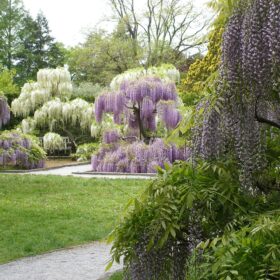
none
In the kitchen:
According to some, the flowers are edible and can be cooked into a vegetarian tempura or mixed into salads. However, many sources warn that the plant is toxic (including the flowers), both for humans and animals.
.
If you have a dead tree in the garden that is still stable, let the wisteria climb it: you will see what a wisteria tree it will give you (see the photo above)!!
Now on horseback! Work awaits us! Our new wonderful outdoor space is about to be born!
GOOD WORK and…if you have any questions, write to info@ilmondodelgiardino.com
Image sources: thanks to Pixabay and many thanks to Matthias Böckel for the wisteria for social media, kurt duschek for the cover image, Coleur for the cascade of flowers, Sonja Kalee for the single flower, Kirstie Hestem for the leaves, Plumbago56 for the seeds, DonnaFloyd for the tree wisteria, commons.wikimedia.org for the trunk and ilgiardino.wiki for the fruit pod.
